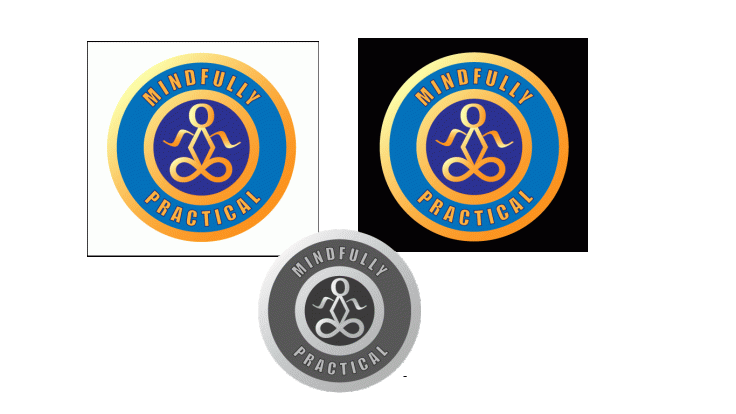Mindfully Practical is an imaginary company which offers various stress management practices for professionals who want a format that is less spiritual than typical yoga studios. For my audio story, I decided to design a single-person podcast that Mindfully Practical would share with their clients/customers.
First Draft
I chose a format that I have heard on other podcasts and You-Tube channels in which a list is presented. My idea was that this would provide a natural way to incorporate background music as I transition between each numbered item. It has a beginning introduction, middle technique list, and quick ending comment. I used the Smart Recorder app on my cell phone to record a continuous piece of me reciting the entire podcast script.
The first challenge was that my voice has never recorded well, sounding much softer than it does in person. I have to consciously lower my pitch in order to sound clear. However, that clarity is mitigated because I have a difficult time not running words together when talking on a script. I also have a difficult time pronouncing words that I can normally say without a problem. (On my recording it is noticeable that I have a hard time with “visualization”.) I was happy to discover that I could set the audio type to Dialogue on my voice over and select Enhance Voice: Female. This greatly improved the problem of my voice recording too softly and made the recording clearer.
I was able to use the Razor tool to break my single recording into clips. I then cut out unnatural pauses and filler words.
For the background music, I found free music licensed under a creative commons license on the website freemusicarchive.org. I chose to use “There Is Always A Reason” by artist Borrtex. On a second track in my multitrack file, I used the razor tool to cut a piece of music which I made louder for an introduction and transition piece between the numbers. I used a fade in and out on these segments. Then I added a third track in which I placed the remaining segments of the music to start and end with my talking. I reduced the volume to negative 22 so that it would not drown out my voice.
Revision Process
My classmates and instructor gave me a lot of great suggestions. Following their advice, I softened the fade in and out of the background music at the beginning and end of the segment. Then I increased the volume on the segments of the voice over by +5 and decreased the volume of the background music during these segments to -25. This made my voice stand out more while still having a background behind it. Finally, I followed a classmate’s suggestion and paired down some information in the last two techniques until all three technique segments were approximately equal in length. This made it sound much more concise and polished.
There were some items that I had wanted to adjust that I was unable to. I had really hoped to re-record my introduction to remove static noise and my saying the word visualization to sound more natural. However, because I lower my pitch when recording, I wasn’t sure how to duplicate the same tone of voice. I tried three re-recordings of the word and each time the difference in the pitch of my voice was noticeably different. This sounded more unusual than my difficulty pronouncing the word so I left the original clip in there.
Also, it was noted that my choice of background music was a bit sad for the nature of the topic. I had a difficult time identifying a different instrumental piece that was still soothing. In the end I decided to stay with the song that I had.
Final Product
My final audio story product is something that I would not have thought that I could do. I have always disliked my voice when recorded and so always avoided it. I am very happy with my audio story just for personal benefit of sounding better! I found the Audition program to be easy to work with and I am pleased with the result.

















